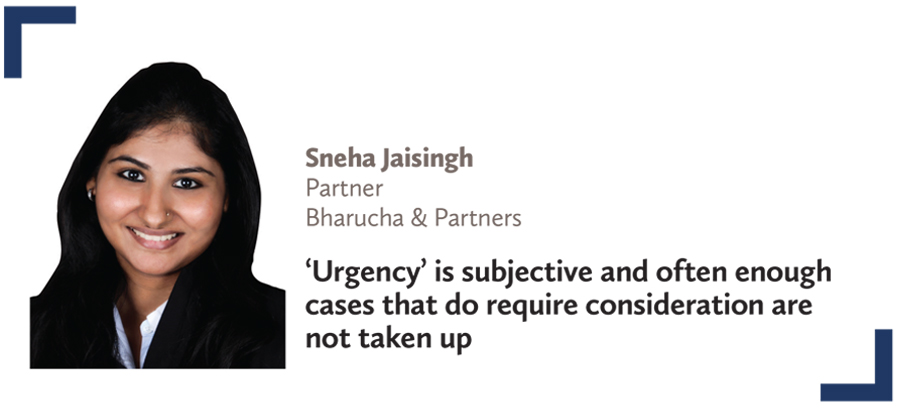Advocates and court administrators are navigating the technology and direction of virtual courts like never before, but is enough being done to make these forums smooth and accessible? Vandana Chatlani reports.
The debate on how India’s courts have coped during the pandemic is an absorbing one, and India Business Law Journal has been across all sides of the argument, including a recent opinion piece written by Delhi High Court Justice Prathiba M Singh. While some argue many great strides have already been made, others point to gaping holes in operational efficiency. And behind all the to and fro of opinions, the enormous case backlog continues to grow.
Lawyers have expressed conflicting views, some pointing to the success of digitization and virtual hearings; others lamenting that court systems across the country are simply not doing enough. Advocate Hasit Seth has argued in this journal that courts have been operating “far below their workload”, while Khaitan & Co disputes partner Kingshuk Banerjee pointed out that courts became more organized only in mid-May, and have solely been hearing “very urgent matters”.
“It has been an experiment which is improving with time,” says Bijal Chhatrapati, a partner at J Sagar Associates (JSA) in Ahmedabad.
Delhi High Court has been lauded for its efforts in embracing virtual courts. However, Poornima Hatti, a partner at Samvad Partners, points out that even in Delhi the differences across courts are stark. “While Delhi High Court has indeed been one of the courts that has done better in the pandemic, generally in our experience listing pending matters has been difficult,” she says. “District courts have only commenced as a routine in September. A lot more could have been done at the Supreme Court level, which has not been done.”
Chhatrapati summarizes some of the key challenges. “While hearings can be virtual, the back-office work of the court registry needs to be physical,” he says. “The staff has its own challenges – social distancing, covid infections and the precautions to be taken, all of which reduce their ability to process the usual huge load of matters.”
In addition, says Chhatrapati, teething issues are expected, given that lawyers are grappling with new systems of online filing and co-ordination, while judges learn to adapt to virtual arguments and hearings.
 Ups and downs
Ups and downs
Covid-19 continues to create uncertainty and unpredictability. From 29 June, Rajasthan High Court conducted both virtual and physical hearings with appropriate measures laid out – such as sanitation, social distancing and limitations on the number of staff and advocates present – to prevent the spread of covid-19. However, due to a rise in infections – specifically in Jodhpur and Jaipur – among advocates and staff of the registry, the court announced that it would cease physical hearings and only hear urgent cases via video-conferencing from 14 September to 1 October for the safety of all stakeholders.
Meanwhile, Karnataka High Court announced that it planned to substantially reopen all courts in three phases: First, reopening 55 taluka courts from 28 September; then courts in 13 districts from 5 October; and finally the remaining district courts from 12 October. Courts are permitted to list 30 cases each day – 15 in the morning and the remainder in the afternoon. They are also allowed to record physical evidence from a maximum of five witnesses each morning.
District courts in Gujarat have also started virtual hearings, which until recently was limited to the high court.

You must be a
subscribersubscribersubscribersubscriber
to read this content, please
subscribesubscribesubscribesubscribe
today.
For group subscribers, please click here to access.
Interested in group subscription? Please contact us.




 Ups and downs
Ups and downs





















